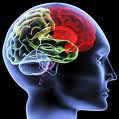In 2011 and 2012, more than 75 lawsuits were filed against the National Football League (NFL), by or on behalf of former players, with essentially all of them alleging that the NFL knowingly withheld or ignored information on the long-term seriousness of concussions. In June 2012, those lawsuits were consolidated into a class-action “mega”-lawsuit (the largest sports-related lawsuit, ever in history) in behalf of hundreds of former professional football players, seeking billions of dollars, in damages, from the owners of the NFL.
A. Repetitive concussions and mild traumatic brain injury (TBI) affect players at all levels: Pop Warner Leagues, high school, college as well as professional. An “Outside the Lines” survey found that a majority of parents are concerned enough about news reports of concussions from playing football to keep their children away from the sport.
B. ESPN presented a week-long, cross-platform series, “Football at a Crossroads” where Outside the Lines, SportsCenter, ESPN.com and ESPN The Magazine examined health issues surrounding football at all levels of the sport: youth football, high school and college football, semi-pro and professional football.
5. http://espn.go.com/video/clip?id=8307887
Prohibit Football?
Massachusetts (by 2010 state law), found 3,000 youth athletes from 164 schools suffered concussions in 2011.
1. Five concussion pee-wee game (http://www.nytimes.com/2012/10/23/sports/football/pee-wee-football-game-withconcussions-brings-penalties-for-adults.html?pagewanted=all)
2. Ramp up protections by employing more personal trainers and cutting back on practice time
3. American Academy of Orthopedic Surgeons…”unclear how much, if any, brain damage occurs from a concussion, the injury does temporarily impair brain function…” and offers these suggestions to protect against a concussion:
- Always wear protective equipment while playing sports, such as a helmet and mouthguard.
- Make sure you are well-trained in your specific sport, and that you understand and abide by all rules.
- If you get hurt, don’t downplay or ignore your symptoms to try to return to the game.
- If you think you have a concussion, do not continue playing and seek medical treatment at once.
Mitigate Risk?
Problem is there is no validated means to diagnose concussion, and to determine who goes on to develop post-concussion syndrome (PCS)
1. Up to half of all concussion and mTBI patients have one or more symptoms that indicate persistent PCS three months after the accident or concussion; 15% of such patients have one or more of such symptoms one full year after the accident.
2. Medical disability and insurance claims, and occupational problems (including frequent requests for time off from work) associated with PCS, impose large economic burdens on society, employers, and workers.
3. Individuals who develop PCS about a week after the concussion (recurring headaches, memory disturbances, difficulties in concentrating, and lingering anxiety and/or depression)
pHLOGISTIX LLC Approach
Our objective is to establish a set of easily-obtainable non-invasive biochemical markers, to reliably act as a predictor(s) of type/severity of TBI most likely to occur following a blow to the head
Another objective is to develop a testing device/system, using specialized and disposable diagnostic components that are designed to interact with testing device, can receive small blood or saliva sample, taken from player, patient, or victim several minutes after head trauma, to analyze a set of biochemical markers providing a useful predictive indicator of severity of cellular/neuronal damage in the brain; and will indicate whether player, patient, or victim needs immediate medical attention to prevent additional and possibly permanent brain damage
Still another objective uses an approach known generally as “personalized medicine” whereby a number of genes are known (apolipoprotein E is best known) to be implicated in regulating responses of brain to TBI; a number of those used are involved in the inflammatory response similar to response to bacteria or viruses. These would be used to mitigate risk similar to physical (and blood tests) or urine testing for illicit or performance-enhancing drugs. If mutation in one or more of these genes were detected, the supervising agency would recommend that the individual NOT play the sport
